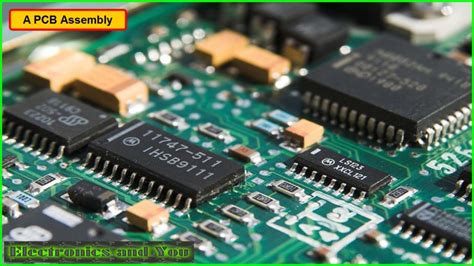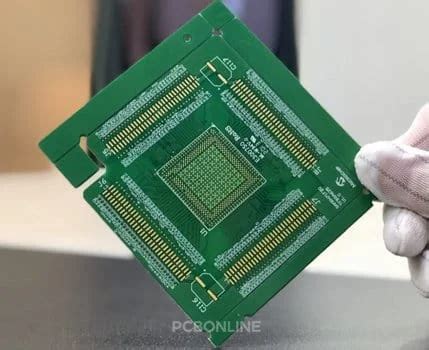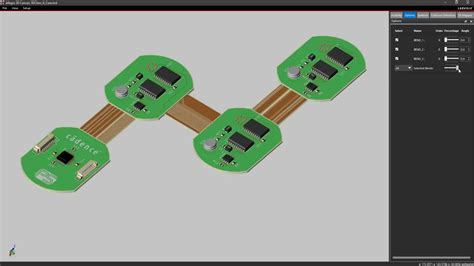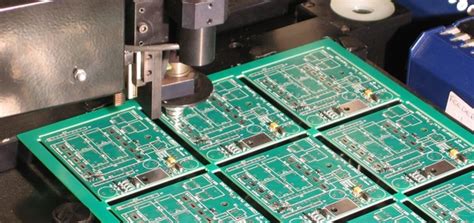Mastering Circuits Assembly: A Guide to Precision and Efficiency
Key Takeaways
In today’s rapidly evolving landscape of pcb assembly and pcba, mastering the art of circuits assembly is essential for achieving optimal results. Understanding the fundamental principles that govern circuits assembly is the first step towards enhancing your skills. A solid grasp of these basics, combined with the right essential tools and equipment, empowers individuals to ensure precision in every project. Techniques for enhancing assembly accuracy, such as meticulous layout design and careful component placement, play a vital role in ensuring that components fit seamlessly on the printed circuit board. Streamlining your circuits assembly process is equally important; implementing step-by-step workflows can significantly reduce errors and improve efficiency. However, challenges are inevitable in pcb assembly. Recognizing common issues, such as solder bridging or misalignment, and knowing how to counter them can save valuable time and resources. Furthermore, instituting robust quality control measures ensures that each assembly meets industry standards. As you explore advanced techniques for increased efficiency in your assemblies, remember that continuous improvement is key; ongoing education and practice will refine your skills over time. By focusing on these essential takeaways, you can pave the way for success in the dynamic field of circuits assembly.
Understanding the Basics of Circuits Assembly
When delving into the world of pcb assembly or pcba, it is crucial to understand the fundamental principles that govern this intricate process. At its core, circuits assembly involves the precise placement and connection of electronic components onto printed circuit boards (PCBs). Proper understanding begins with recognizing the various types of components involved, such as capacitors, resistors, and integrated circuits, each serving a specific function within the electronic system.
A key aspect of successful assembly is understanding soldering techniques, which are vital for ensuring that connections are both reliable and efficient. Whether one is using lead-based or lead-free solder, mastering these techniques can significantly enhance overall assembly accuracy. Furthermore, familiarity with circuit layouts and schematic diagrams allows assemblers to visualize and execute placements effectively.
“A solid foundation in the basics is essential for any aspiring technician aiming for precision in pcb assembly.”
It’s also important to consider the environment in which assembly takes place. Maintaining a clean workspace can prevent contamination and defects that may compromise the final product’s integrity. As one navigates through their journey in circuits assembly, continuous learning about advancements in tools and equipment will further refine pcba skills. By grasping these foundational concepts, you set the stage for developing a more sophisticated understanding and mastery of circuits assembly processes.
Essential Tools and Equipment for Precision
To achieve outstanding results in pcb assembly, having the right tools and equipment is paramount. The precision required in pcba processes can be enhanced significantly when you utilize high-quality instruments and accessories. Some essential tools include:
| Tool/Equipment | Purpose |
|---|---|
| Soldering Iron | Essential for joining components on the circuit board. |
| Multi-meter | Used to measure electrical properties and ensure functionality. |
| PCB Holder/Clamp | Stabilizes the board during assembly, allowing for better accuracy. |
| Flux Pen | Improves solder adherence, thus enhancing joint reliability. |
| Tweezers | Ideal for handling small components with precision. |
Each tool plays a crucial role in enhancing efficiency and ensuring accurate placements of components on your board. For instance, using a flux pen can reduce the chances of cold joints during soldering—a common issue that can compromise circuit integrity.
Investing in quality tools not only improves the pcb assembly outcomes but also contributes to a smoother workflow overall. Furthermore, maintaining your equipment in peak condition is essential for sustaining long-term quality in your work—consider regular calibration of your multi-meter and keeping your soldering iron tip clean.
The synergy between reliable tools and skilled operators leads to optimal performance in pcba tasks, where every small detail matters immensely. Always remember that excellent results stem not only from expertise but also from thoughtfully selected instruments tailored to meet the demands of precise circuits assembly.
Techniques for Enhancing Assembly Accuracy
Achieving high accuracy in pcb assembly or PCBA requires a keen understanding of various techniques that can significantly reduce errors and improve overall quality. One effective method involves the meticulous organization of components and their respective placements on the circuit board. Utilizing a systematic approach, such as a step-by-step assembly checklist, can help ensure that each part is correctly positioned and integrated into the design. Moreover, leveraging automated optical inspection (AOI) systems offers the ability to detect misalignments or defects at an early stage. Regular calibration of equipment is essential to maintain precision over time, as even minor discrepancies can lead to significant issues in performance. Additionally, incorporating ergonomic practices while soldering can minimize human error; for instance, using tool holders and magnifying equipment can enhance visibility and control during the sensitive assembly process. Training personnel in these best practices fosters not only confidence but also a culture of quality that permeates all aspects of pcb assembly. By consistently applying these accuracy-enhancing techniques, teams can significantly improve their outcomes in the complex world of PCBA, ultimately leading to more reliable products.
Streamlining Your Circuits Assembly Process
Streamlining your circuits assembly process is essential for achieving optimal results in pcb assembly and enhancing the overall efficiency of your workflow. To begin with, it is crucial to organize your workspace effectively. A tidy environment minimizes distractions and allows for easier access to the essential tools and equipment necessary for precise assembly. Implementing a systematic approach to inventory management ensures that components are readily available, thus reducing downtime.
Moreover, employing modern techniques such as just-in-time production can significantly reduce waste by ensuring that materials arrive only as needed. Adopting automation tools in the pcba process can further optimize efficiency, allowing for faster assembly times while maintaining high-quality standards. Additionally, training team members on best practices in technique application can lead to fewer errors in the assembly process. Utilizing a combination of efficient layouts, regular team training sessions, and advanced technology plays a pivotal role in streamlining the circuits assembly procedure, ultimately resulting in higher accuracy and better overall productivity.
Common Challenges in Circuits Assembly and How to Overcome Them
In the realm of pcb assembly, various challenges can disrupt the workflow and compromise the quality of the final product. One common issue is component misalignment, which can lead to malfunctioning circuits. This can often be resolved by utilizing precise pcba techniques, such as implementing automated alignment systems that ensure components are placed exactly where they need to be. Another obstacle is dealing with soldering defects, which may arise due to incorrect temperature settings or insufficient solder application. To mitigate this, it’s advisable to conduct regular maintenance on soldering equipment and adhere to best practices for solder application. Additionally, managing time constraints can pose a significant challenge, especially in high-demand production environments. Streamlining processes through methodologies like Lean manufacturing can enhance efficiency and alleviate some of this pressure. Finally, ensuring effective communication among team members is crucial; establishing clear protocols and training can help prevent misunderstandings that lead to assembly errors. By addressing these common challenges with strategic solutions, manufacturers can greatly improve the precision and efficiency of their circuits assembly processes.
Quality Control Measures in Circuits Assembly
Implementing effective quality control measures in pcb assembly is essential for ensuring that each printed circuit board assembly (PCBA) meets the highest standards of precision and reliability. One of the primary methods of achieving this is through rigorous inspection processes at various stages of assembly. Utilizing tools such as automated optical inspection (AOI) systems can aid significantly in identifying potential defects, ensuring that any issues are addressed before further progression in the assembly line. Another critical measure is the adoption of standardized operating procedures (SOPs) which help maintain consistency across all levels of pcba production. These SOPs often include comprehensive checklists and guidelines for both manual and automated processes, promoting a systematic approach to quality assurance.
Moreover, conducting regular training sessions for assemblers on the latest techniques and tools can enhance overall efficiency while fostering a culture of quality awareness among team members. It’s also beneficial to implement statistical process control (SPC) systems to monitor various metrics during assembly, allowing teams to detect deviations from expected performance early on. By integrating these control measures, manufacturers can significantly reduce errors, improve product reliability, and ultimately deliver high-quality pcb assembly solutions that meet or exceed industry standards.
Advanced Techniques for Increased Efficiency
As the demand for precise pcb assembly increases, mastering advanced techniques becomes essential to elevate performance and productivity. One effective method is the implementation of automated processes in the pcba workflow; machinery can drastically reduce human error and enhance overall precision. Furthermore, integrating advanced software tools for design simulation can optimize layouts before moving to physical assembly, allowing for quicker alterations and a smoother workflow. Another beneficial technique is employing selective soldering, which targets specific areas of a pcb assembly, minimizing waste and maximizing efficiency. Additionally, the use of thermal imaging during quality checks enables technicians to identify potential failures in solder joints or component placement instantly. Adopting these advanced techniques not only boosts efficiency but also aids in maintaining high standards of quality control throughout the pcb assembly process. Emphasizing continuous training on these cutting-edge methods will ensure that teams remain agile, prepared for challenges, and adept at enhancing their pcba capabilities.
Continuous Improvement in Your Circuits Assembly Skills
Improving your circuits assembly skills is a vital component in achieving excellence in PCB assembly or PCBA. Continuous improvement involves a commitment to refining techniques, embracing new technology, and fostering an environment of regular feedback and training. To enhance your expertise, start by integrating effective practices into your daily routine. Assess your current processes critically—identify areas where precision can be improved, such as component placement and soldering techniques.
Consider employing advanced tools designed for accuracy in circuit assembly, which can drastically reduce errors associated with manual processes. Additionally, collaborating with peers can provide invaluable insights into various assembly methods, enabling you to adopt best practices that lead to increased efficiency. Regular workshops or training sessions focused on PCBA innovations can help you stay abreast of the latest developments, ensuring your skill set remains relevant in a rapidly evolving field.
Moreover, maintaining a mindset geared towards learning and adaptation will empower you to overcome obstacles that may arise during the assembly process. Utilize qualitative metrics to evaluate your performance continually; this not only highlights your progress but also motivates sustained engagement in the craft. Ultimately, fostering an ethos of continuous improvement will enhance both the quality of your circuits assembly projects and your professional development within this specialized discipline.
Conclusion
In summary, mastering circuits assembly involves a blend of technical skills and a keen understanding of the processes involved in pcb assembly. Throughout this guide, we have dissected various dimensions of the pcba process, from the essential tools that ensure precision to advanced techniques that elevate efficiency. It is vital to recognize that embracing continuous improvement is key to enhancing one’s assembly skills. As you navigate the complexities of circuits assembly, maintaining a proactive approach towards learning and practicing can greatly mitigate common challenges. By implementing robust quality control measures and striving for accuracy in each step, you are well on your way to achieving excellence in pcb assembly. Ultimately, this journey not only equips you with the necessary knowledge but also fosters a deeper appreciation for the craft and its significance in today’s technology-driven landscape.
FAQs
What is the difference between PCB assembly and PCBA?
PCB assembly refers to the process of mounting various electronic components on a printed circuit board (PCB) to create a functional electronic device. PCBA, on the other hand, stands for Printed Circuit Board Assembly, which refers to the complete assembly with all components soldered onto the PCB.
What are the essential tools for circuits assembly?
To achieve accuracy in pcb assembly, you will need tools such as soldering irons, multimeters, tweezers, and microscopes. These tools help ensure that components are placed correctly and connections are made securely.
How can I enhance my accuracy in circuits assembly?
Utilizing techniques such as thorough pre-assembly planning, employing a well-structured work area, and taking time to review your work can significantly boost your precision during pcba processes.
What common challenges do I face in circuits assembly?
Some common challenges include misalignment of components, soldering issues, and insufficient quality control. Understanding these hurdles allows you to prepare methods to overcome them effectively.
What quality control measures should be implemented during circuits assembly?
Implementing measures such as visual inspections, using automated testing equipment, and conducting functional tests throughout the pcb assembly process can improve overall quality.







